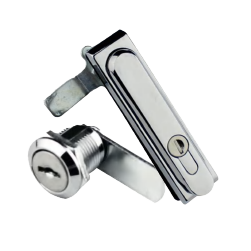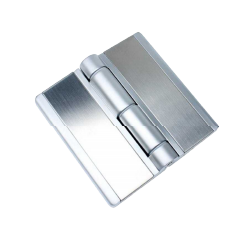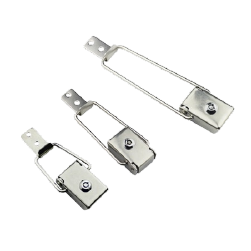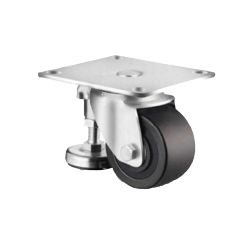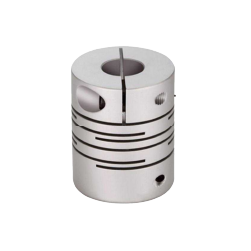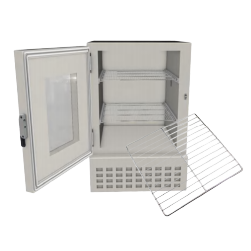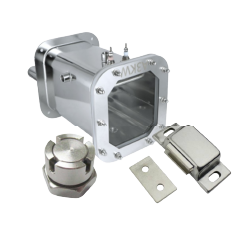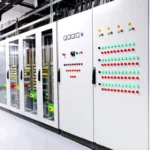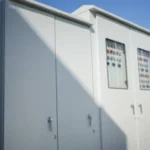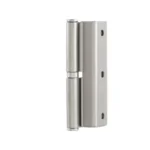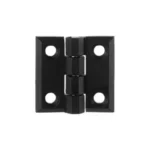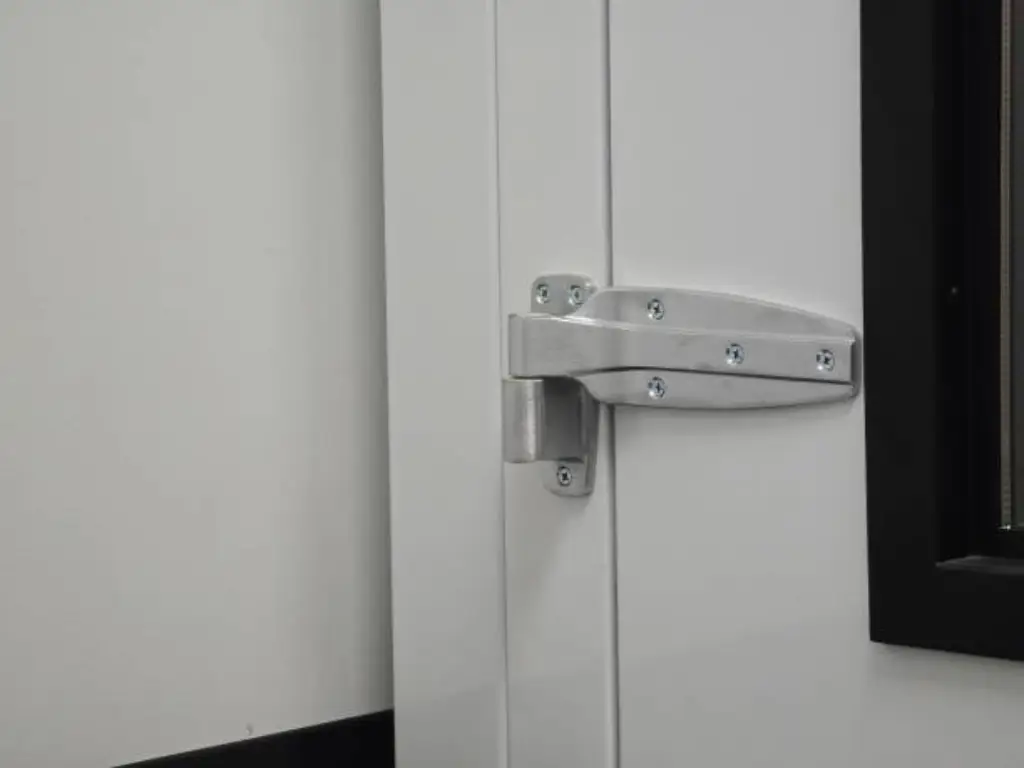
Introduction
In the complex world of industrial design and electrical engineering, some of the components, due to their ubiquity, are in danger of being ignored. A good example is the electrical panel hinge. It is not a part that attracts attention, such as a PLC or a high-power transformer, but it does a job so basic that without it, the integrity, safety and serviceability of the entire system would be lost. This humble device is the key point of balance between access and security.
This guide is devoted to the transfer of the electrical panel hinge to the center of the stage, giving a clear answer to the question of its types, materials, and the strict procedure of its correct choice.
What are Electrical Panel Hinges?
An electrical panel hinge, including various electrical enclosure hinges, is a mechanical bearing at its essence, which joins an enclosure door to its frame, permitting the door a restricted, regulated angle of rotation. But to compare it with a common residential door hinge would be a basic misconception of its use. In contrast to their domestic equivalents, electrical panel hinges are designed components that are expected to work in harsh environments and demanding industrial conditions.
They are not only access, but protection. An appropriate hinge will also assist in the environmental seal of the enclosure, and will help keep the enclosure at its NEMA or IP rating by providing a consistent gasket compression. It is made to carry heavier loads to accommodate heavy doors with instrumentation. It is built with durability in mind to survive thousands of opening and closing cycles and security to prevent unauthorized access to sensitive or dangerous equipment. It is basically a special component designed to be reliable in a situation where failure is not acceptable.
Common Types of Electrical Panel Hinges
The selection of a type of hinge is dictated by a clear set of operational questions: Who needs access? How often? What level of security is required? What are the physical constraints of the space? The answers lead to a specific mechanical solution, with each hinge type offering a distinct set of advantages. These hinges come in many different sizes to accommodate various door weights and enclosure dimensions.
| Hinge Type | Load Capacity | Security | Installation Difficulty | Aesthetics | Swing Angle | Suitable Applications | Cost |
| Butt Hinge | 50-200 kg | Medium | Medium | Average | 90° | Heavy-duty applications, frequent door use, low security requirements | $ |
| Concealed Hinge | 50-150 kg | High | High | High | 180° | High-security needs, modern design applications | $$ |
| Detachable Hinge | 30-150 kg | Medium | Low | Average | 180° | Quick removal needed for maintenance and repair | $$ |
| TorqueHinge | 50-200 kg | High | High | Average | 90°-180° | Heavy doors and high security applications | $$ |
| Offset Hinge | 50-300 kg | Medium | Medium | Average | 180°-270° | Applications needing full door swing in tight spaces | $$ |
| Piano Hinge | 100-500 kg | Medium | High | High | 180° | Long or heavy doors requiring sealed enclosures | $$$$ |
Butt Hinge
One of the most familiar and simple designs is the butt hinge. It is made of two leaves held together by a central pin and is usually attached to the outside of the enclosure. It is simple and strong enough to bear a heavy load, which is why it is a good option when it is not the main priority to secure the hinge against tampering. They are workhorses, and are appreciated on account of their sturdiness and straightforward utility.
Concealed Hinge
The concealed hinge is the better option where the application requires a higher level of security and a clean, modern look. This hinge, as the name suggests, is fully installed within the enclosure so that there are no external components exposed when the door is closed. This design renders it practically tamper-proof on the outside, and guards against the pivot pin being forced out. In addition to security, it enables a smooth and continuous exterior surface, which is of great value in the design of modern equipment.
Detachable Hinge
The detachable hinge is also referred to as a lift-off hinge and is designed to allow quick and full removal of the door without tools. It is made up of two distinct leaves, one of which has a pin and the other a receiving barrel, which can be readily separated by merely lifting the door vertically. This aspect is priceless in production and repair situations where there is a need to have free access to the interior of the panel, which saves a lot of time in service. They come in certain right-hand and left-hand models.
Torque Hinge
A torque hinge, or friction hinge, introduces a sophisticated level of control. It has a mechanism that offers resistance at all points of its range of motion. This enables the door to be held open at any angle, and does not require a separate gas strut or door stay. It is an important safety measure, so that heavy doors do not suddenly swing shut on the hands of an operator, and it is also a usability improvement, since it leaves the hands of the technician free to work.
Offset Hinges
The offset hinge is the answer when an application demands that the cabinet door swing fully out of the frame. Its special geometry moves, or offsets, the pivot point off the enclosure body. This enables the door to swing all the way to 180 degrees or even 270 degrees, to rest flat against the side of the cabinet. This gives the greatest clearance and unrestricted access, and is best where there is little room to spare, and where a half-open door would be a nuisance.
Piano Hinge
A piano hinge or continuous hinge is a long, single hinge that extends the entire length of the door or panel it is supporting. The main benefit of it is that the load is distributed extremely evenly throughout the height of the connection. This avoids door sag, a uniform seal along the gasket, and a high level of structural rigidity. The continuous hinge is frequently the best engineering solution for very long or heavy doors, or where high levels of protection against environmental ingress are necessary.
Common Materials Used in Electrical Panel Hinges
The material and its accompanying finish are not merely aesthetic choices; they are the hinge’s primary defense against its operating environment. This selection is a critical calculation of corrosion resistance, strength, and lifespan, where the material and its surface treatment function as a single, integrated system.
Stainless Steel
Stainless steel is the high-end option when corrosion resistance is of utmost importance. It has chromium that forms a passive self-healing oxide layer on its surface.
- The most common is grade 304, which has very good corrosion resistance in most indoor and outdoor applications.
- Grade 316, which contains additional molybdenum, provides better chloride and acid resistance and is therefore critical in marine, chemical processing and food and beverage environments where harsh washdowns are frequent.
Stainless steel finishes usually consist of adding to the natural qualities of the material, e.g. passivation to increase corrosion resistance, or brushing and polishing to achieve a particular appearance.
Steel
Carbon steel is the industrial workhorse and is valued because of its strength, durability, and low cost. But in its crude form, it is very prone to rust. It has to be coated with a surface finish, e.g. zinc plating or a tough powder coating, to be viable. Such finishes are essential in avoiding rust and prolonging the service life of the hinge.
Zinc Alloy
Zinc alloys, particularly Zamak, are ideal for producing hinges with complex, intricate shapes through die-casting. They provide a good combination of strength, dimensional stability and inherent corrosion resistance. Zinc alloy hinges are commonly powder coated or chrome plated, which gives a hard wearing and attractive surface that can be used in a large variety of indoor and some sheltered outdoor uses.
Aluminum
Aluminum is valued due to its lightweight and natural resistance to corrosion. It is not as strong as steel but is an ideal material to use where weight is a major consideration, e.g. aerospace or transport enclosures. Aluminum hinges may be anodized to increase the surface hardness and further increase the resistance to corrosion and wear.
Brass
Brass is an alloy of copper and zinc, which has good corrosion resistance and appearance. It is less frequently used in heavy industrial panels, but is occasionally used in certain applications where its anti-sparking characteristics are needed (explosive environments) or where a high-end appearance is desired.
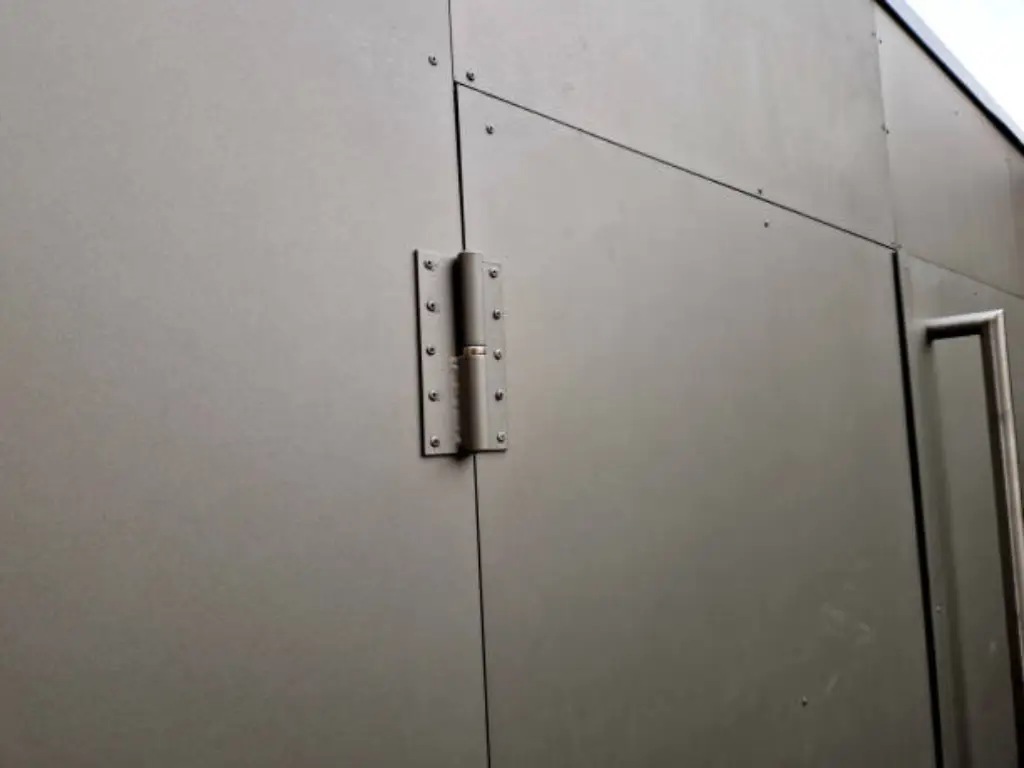
Key Industry Standards and Certifications of Electrical Panel Hinge
Hinges are not selected in the professional world based on specs; they have to be compliant. Safety and reliability are the language of industry standards, which guarantee that a component will work as intended in a given set of conditions. In the case of electrical enclosures, three standards are most important.
- NEMA (National Electrical Manufacturers Association): NEMA ratings are a North American standard that describes the degree of protection afforded by an enclosure against environmental hazards. NEMA 1 is general purpose indoor, and NEMA 4X is watertight, dust tight, and corrosion resistant and is used in harsh outdoor or washdown applications. The hinge must support, not compromise, this rating.
- IP (Ingress Protection): The IP rating is a worldwide standard (IEC 60529) that defines the level of protection against the intrusion of foreign objects (the first digit) and water (the second digit). A hinge fitted to an IP65-rated enclosure, say, should aid in ensuring a seal that is entirely dust-tight and capable of resisting low-pressure water jets in any direction.
- RoHS (Restriction of Hazardous Substances): This is a European Union directive that limits the use of certain hazardous substances contained in electrical and electronic products. Any hinge to be used in a product that will be sold in the EU must be RoHS compliant. This is an issue of market access and legality.
To fully understand the critical differences and equivalencies between these two systems, read our detailed guide comparing NEMA and IP ratings.
How to Select the Right Electrical Panel Hinge: A 4-Step Checklist
Choosing the right hinge doesn’t have to be complex. By following a systematic process, you can confidently specify the perfect component for your application.
Step 1: Define Your Mechanical Requirements
This step is concerned with the physics of the application. First, identify the Load Capacity needed. The weight and dimensions (height and width) of the door must be known so that the forces to be exerted on the hinges can be calculated. Respected manufacturers give load ratings on their products. Then, there is Size Compatibility and Hinge Orientation- make sure that the size of the hinge fits the space available on the door and frame and whether you require a left-hand or right-hand hinge. Lastly, specify the necessary Angle of Rotation (Swing) and determine whether there are any special requirements of Allowable Endplay (axial movement along the pin) that may influence door alignment.
Step 2: Analyze Your Operating Environment
This is a process of durability and material science. Will the enclosure be inside a climate-controlled room or outside in the rain, salt spray, and sun? Material selection is determined by the answer. Here, you choose between durable stainless steel, coated carbon steel or other materials depending on the Environment and Weather Resistance required as discussed earlier. The most common cause of premature hinge failure is a mismatch between the material and the environment.
Step 3: Verify Your Industry Standards & Certifications
After establishing the mechanical and environmental requirements, you have to superimpose the regulatory requirements. Does the end assembly require a particular NEMA or IP rating? Does your target market require RoHS compliance? By asking these questions, you will reduce your options to only those hinges that are certified to meet the required standards, and your product will be compliant and safe.
Step 4: Plan for Installation & Safety
The last step takes into consideration the human interface with the panel. Will the hinge be welded, bolted, or riveted? Think about the Safety Features: Do you require a concealed hinge to resist tampering, or a lift-off hinge to provide easy access to maintenance? Lastly, there is Aesthetics. Although in industrial environments, the most important thing is the functionality, the professional look indicates the quality of the product. The decision to use an external butt hinge or an internal concealed hinge may have a great influence on the overall appearance of the enclosure. It is also important at this stage to think about how the hinges will work with other important hardware like locking systems and handles, to make the design cohesive, secure, and user-friendly.
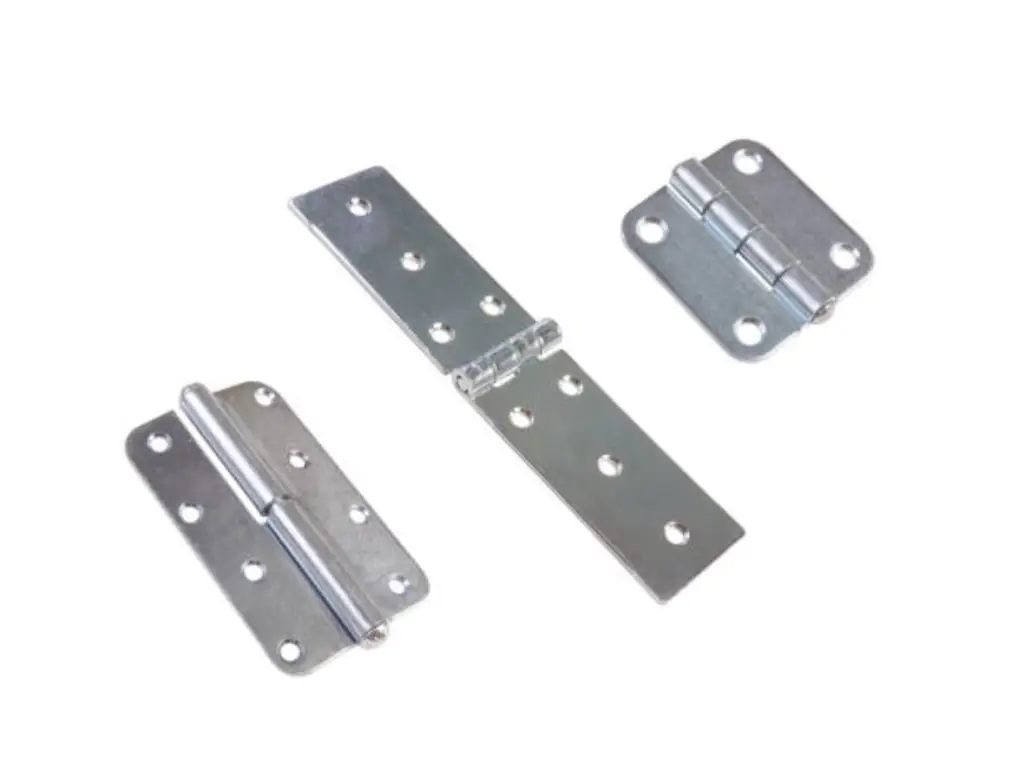
Common Applications of Electrical Panel Hinges in Different Industries
The importance of electrical panel hinges can be proved by the fact that they are used in a variety of challenging industries. Various hinge designs are stipulated to address the special needs of the various sectors to ensure safety, durability and efficiency in operation.
Heavy-duty hinges are used in Manufacturing and Automation to support control panels in continuous vibration and industrial conditions. Hinge types that are detachable are favored to allow easy access to PLCs during maintenance, whereas torque hinges keep panels open to ensure safety of the operator.
In the case of Telecommunications and Data Centers, stainless steel hinges must be weather-sealed and corrosion-resistant to protect sensitive network equipment in outdoor cabinets. High-cycle butt hinges with simple designs are designed to open and close thousands of times on server racks in data centers.
High-load-bearing hinges are essential in the Energy and Power Distribution industry, where switchgear cabinets and renewable energy enclosures are concerned. The hinges used must be made of NEMA 4X-compliant materials, such as Grade 316 stainless steel, and be able to withstand harsh weather conditions and guarantee grid reliability.
In Transportation and Marine applications, hinges with outstanding vibration and shock resistance are specified on enclosures on trains, ships and emergency vehicles. Marine environments require grade 316 stainless steel models to fight against saltwater corrosion and safeguard essential systems.
The Food, Beverage and Pharmaceutical industries require all equipment to be fitted with hygienic, crevice-free stainless steel hinges. These hinges are specially made to withstand daily high-pressure, caustic washdowns and avoid microbial contamination and meet stringent health and safety codes.
Sourcing Your Hinges: Partnering with an Expert Manufacturer
Once you have precisely defined the required hinge, the final step is sourcing. It’s often most efficient to consider your other enclosure hardware needs at the same time, such as locks, latches, and handles. While countless resellers and distributors exist, partnering directly with a specialized industrial hardware manufacturer offers distinct advantages. A true manufacturer is not simply a seller of parts; they are a provider of engineered solutions.
Working with an expert manufacturer like KUNLONG provides direct access to engineering support, ensuring you are choosing the optimal component for your design. With nearly two decades of dedicated expertise in industrial panel hardware, we provide a one-stop technical service from design to implementation.
Our commitment to performance is proven. We engineer hinges with superior corrosion resistance (passing 1000-hour salt spray tests), high load capacity, and specialized functions like antibacterial surfaces and extreme temperature tolerance (-70°C to 260°C). This reliability is built upon a foundation of rigorous quality assurance. Every batch undergoes 15 meticulous checks, all materials are SGS and RoHScertified, and we guarantee a 20,000+ cycle lifespan with precision tolerances controlled to 0.0005mm.
Furthermore, our professional customization service is unparalleled. We have successfully developed over 700 custom functions, offering modifications to everything from size and material to over 30 colors and 10 surface finishes. Backed by ISO, CE, CQC, and RoHS certifications, partnering with KUNLONG mitigates risk and ensures your project is equipped with hardware engineered for excellence.
Installation Tips and Best Practices for Electrical Panel Hinges
A perfectly selected hinge can still fail if installed improperly. Adhering to best practices is essential for ensuring long-term performance and reliability.
- Precise Alignment: This is the most critical factor. Misaligned hinges will experience uneven load distribution, leading to premature wear on the pin and barrels, door sag, and a compromised seal. Use jigs or alignment tools for accuracy.
- Correct Fasteners: Use fasteners appropriate for the hinge, door, and frame materials. Ensure they are tightened to the correct torque specification to prevent loosening due to vibration.
- Welding Considerations: If welding a hinge, use the correct technique for the material to avoid compromising its strength or corrosion resistance. Protect the pivot mechanism from excessive heat and weld spatter.
- Periodic Inspection: As part of a regular maintenance schedule, check hinges for signs of wear, looseness, or corrosion. For non-sealed hinges in demanding environments, a small amount of appropriate lubricant can significantly extend service life.
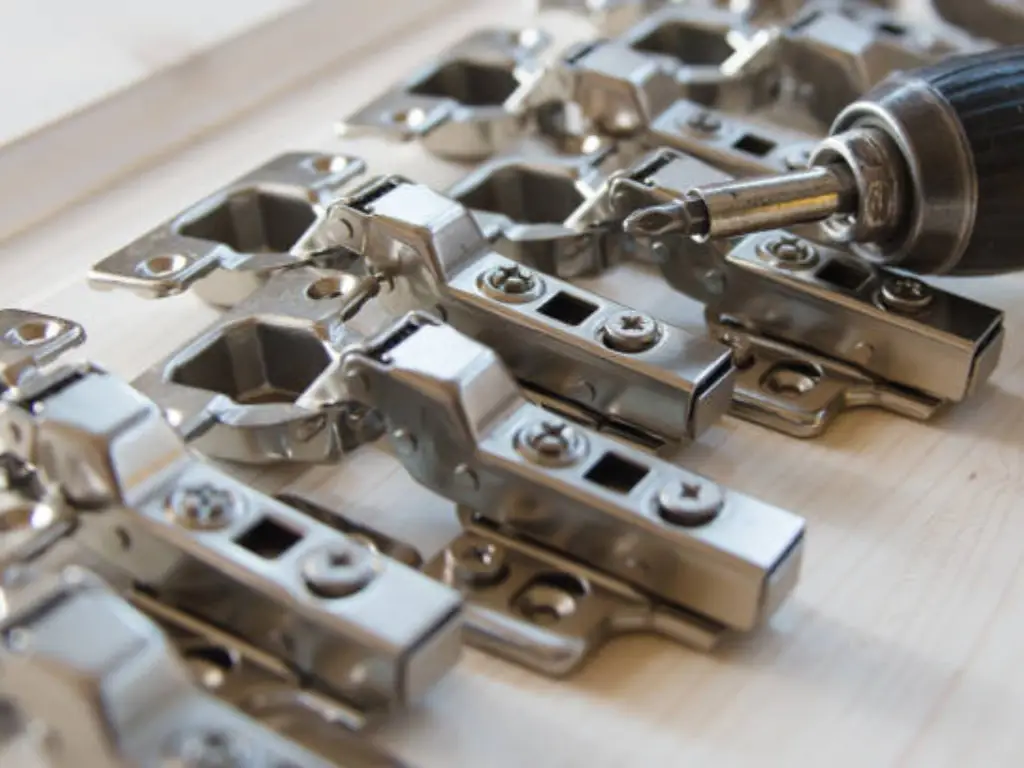
Conclusion
The electrical panel hinge, though small, carries a significant weight of responsibility. It is a guardian of sensitive equipment, a facilitator of critical maintenance, and a key component in a system’s overall safety and reliability. Its selection should never be an afterthought. By systematically evaluating the mechanical requirements, the operating environment, and the governing industry standards, engineers and designers can make an informed choice. This diligent process ensures that this essential component will perform its function flawlessly, protecting the value and integrity of the system it serves for years to come.

